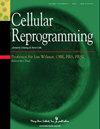猪胚胎冷冻玻璃化的最佳阶段。
IF 1.2
4区 医学
Q4 BIOTECHNOLOGY & APPLIED MICROBIOLOGY
引用次数: 0
摘要
不同发育阶段的猪胚胎对低温的耐受性不同。因此,我们以孤雌激活(PA)后的猪胚胎为模型,探索桑椹胚(D4)、早期胚泡(D5)和PA后膨胀胚泡(D6)玻璃化的最佳发育阶段。冷冻复苏24小时后,用显微镜观察胚胎并通过不同染色进行分析。玻璃化后胚胎的质量受到损害,包括胚胎细胞核、DNA、细胞骨架和细胞器。D5胚胎在24小时时的再膨胀率显著高于D4和D6胚胎(D5对D4对D6,27.620 ± 0.041对7.809 ± 0.027对13.970 ± 0.032,p < 因此,选择D5胚胎作为研究对象,探讨玻璃化处理对玻璃化胚胎脂质的影响。结果表明,外脂蛋白PLIN3信使RNA(mRNA)和三酰甘油合成相关基因AGPAT1和DGAT mRNA的表达水平显著降低(p < 0.05)。玻璃化影响脂质合成,这可能对胚胎发育产生不可逆转的影响。总之,我们的数据表明,早期胚泡玻璃化的最佳阶段是D5。本文章由计算机程序翻译,如有差异,请以英文原文为准。
Optimal Stage for Cryotop Vitrification of Porcine Embryos.
Different development stages of porcine embryos have different tolerance to low temperature. Therefore, we took the porcine embryos after parthenogenetic activation (PA) as the model, to explore the optimal development stage for vitrification during morula (D4), early blastocyst (D5), and expanded blastocyst (D6) after PA (D0). Embryos were observed with microscope and analyzed by different staining after cryo-recovery for 24 hours. The quality of embryos was damaged after vitrification, including embryonic nuclei, DNA, cytoskeleton, and organelles. The re-expansion rate at 24 hours of D5 embryos was significantly higher than those of D4 and D6 embryos (D5 vs. D4 vs. D6, 27.620 ± 0.041 vs. 7.809 ± 0.027 vs. 13.970 ± 0.032, p < 0.05). Therefore, D5 embryos were selected as research objects to explore the effect of vitrification on lipid in vitrified embryos. The results showed that the expression levels of perilipin PLIN3 messenger RNA (mRNA) and triacylglycerol synthesis-related genes AGPAT1 and DGAT mRNA are significantly reduced (p < 0.05). Vitrification affected lipid synthesis, which might have an irreversible impact on embryonic development. In conclusion, our data demonstrated that the optimal stage of vitrification was D5 for early blastocysts.
求助全文
通过发布文献求助,成功后即可免费获取论文全文。
去求助
来源期刊

Cellular reprogramming
CELL & TISSUE ENGINEERING-BIOTECHNOLOGY & APPLIED MICROBIOLOGY
CiteScore
2.50
自引率
6.20%
发文量
37
审稿时长
3 months
期刊介绍:
Cellular Reprogramming is the premier journal dedicated to providing new insights on the etiology, development, and potential treatment of various diseases through reprogramming cellular mechanisms. The Journal delivers information on cutting-edge techniques and the latest high-quality research and discoveries that are transforming biomedical research.
Cellular Reprogramming coverage includes:
Somatic cell nuclear transfer and reprogramming in early embryos
Embryonic stem cells
Nuclear transfer stem cells (stem cells derived from nuclear transfer embryos)
Generation of induced pluripotent stem (iPS) cells and/or potential for cell-based therapies
Epigenetics
Adult stem cells and pluripotency.
 求助内容:
求助内容: 应助结果提醒方式:
应助结果提醒方式:


